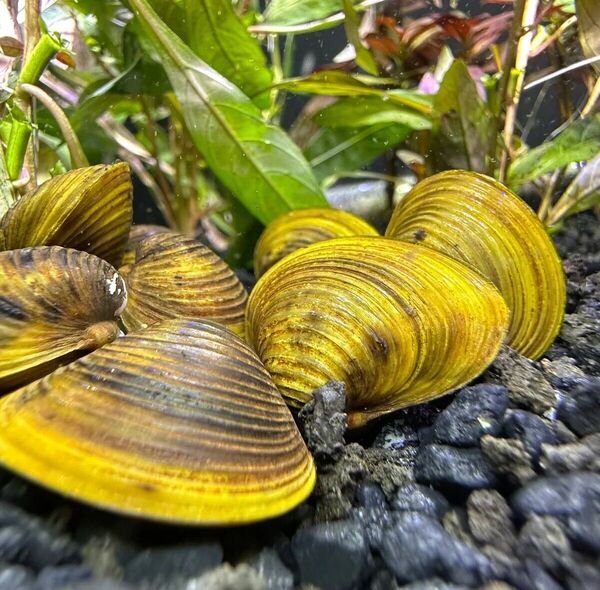Clams are not just simple sea creatures—they’re intricate, vital parts of the aquatic world, serving as natural water filters and contributors to ecosystems. If you’ve ever asked yourself, “What does a clam eat?”, you’re about to discover the answer. Let’s dive into a detailed, easy-to-follow guide about clam diets, feeding habits, and their fascinating role in nature.
Introduction to Clam Feeding
What Do Clams Eat in the Wild?
Types of Food Clams Consume
How Do Clams Eat Without a Mouth?
The Role of Clams in Filtration
What Do Freshwater Clams Eat?
What Do Saltwater Clams Eat?
Diet Differences Among Clam Species
Giant Clams
Razor Clams
Soft-Shell Clams
Hard-Shell Clams
Geoduck Clams
Clam Feeding in Aquariums
Can Clams Survive Without Food?
FAQs About Clam Diets

Clams might seem like quiet, unassuming creatures, but their feeding process is extraordinary. Unlike animals with mouths or teeth, clams filter their food from the water. This unique feeding style supports not only their survival but also improves the environment around them by filtering out impurities and maintaining water clarity.
In their natural habitats, clams rely on food sources available in the water or sediment. These include:
Phytoplankton: Tiny, plant-like organisms that float in the water. They’re essentially clams’ main course.
Zooplankton: Microscopic animals that complement clams' diets.
Organic Matter: Decomposed plant and animal material that settles in water.
Wild clams are like miniature vacuum cleaners, constantly filtering the water to extract nutrients while helping keep the ecosystem balanced.
The clam’s diet is straightforward but diverse. Key components include:
Algae: Particularly single-celled types like diatoms, which are rich in nutrients.
Detritus: A mix of decomposed organic material found in aquatic sediment.
Bacteria: Clams consume some bacteria as part of their natural filtration process.
Their diet changes slightly depending on whether they live in freshwater or saltwater.
Clams may lack a traditional mouth, but they have evolved an impressive system to extract nutrients from their surroundings:
Siphons: Clams use specialized tubes, called siphons, to draw water into their bodies.
Gills: Their gills filter out food particles from the water. The same gills also allow them to breathe.
Digestive System: Once the food particles are trapped, they’re sent to the digestive system for processing.
This process allows clams to filter and consume their food with remarkable efficiency.
Clams are nature’s water purifiers. By feeding on microscopic particles, they filter out impurities, improving water quality in the process. A single clam can filter several gallons of water a day, benefiting aquatic ecosystems and even humans by creating cleaner water environments.
Freshwater clams feed primarily on:
Suspended algae in lakes and rivers.
Microorganisms and organic debris found in sediment.
Detritus from plants and animals.
Their ability to filter water makes them a popular choice for aquariums, as they help maintain water clarity and reduce waste.
Saltwater clams, often found in oceans and estuaries, share a similar diet but consume additional food sources, including:
Marine phytoplankton: Algae that thrive in saltwater.
Coral reef particles: Nutrients from coral habitats.
Tidal debris: Organic materials carried by ocean currents.
These food sources give saltwater clams a robust diet suited for their environment.
They host symbiotic algae, zooxanthellae, in their tissues, which produce food through photosynthesis.
Also filter-feed on plankton.
Found in sandy ocean beds, they consume plankton and organic debris.
Thrive in muddy environments and feed on organic material in sediment.
Found in clearer waters, they filter algae and organic particles.
Known for their long siphons, they primarily consume phytoplankton from deeper waters.
Each species adapts its feeding habits to its unique environment, making clams a diverse and fascinating group of creatures.
Caring for clams in an aquarium requires special attention to their dietary needs:
Liquid Plankton or Algae Supplements: These provide the nutrients clams need to thrive.
Clean Water: Clams filter their food, so clean, nutrient-rich water is essential.
Avoid Overfeeding: Too many nutrients in the water can harm clams and other aquatic life.
Clams are low-maintenance pets, but they need a well-balanced environment to stay healthy.
Clams can survive short periods without food by relying on stored energy. However, prolonged starvation weakens their systems, making them more susceptible to disease. In the wild, they rarely face food shortages, but in captivity, it’s crucial to maintain a consistent food supply.
Yes, algae are one of the primary components of a clam’s diet, whether in freshwater or saltwater.
Clams may filter small particles from fish food, but it’s not ideal. Liquid plankton or algae are better suited for their dietary needs.
The amount varies by species and size, but clams can filter and consume significant amounts of microscopic food each day.
In colder temperatures, clams slow their activity, including feeding. However, they may still consume small amounts if food is available.
Clams are omnivores, consuming plant-like algae and organic matter from animals.
Clams’ unique feeding habits make them vital contributors to aquatic ecosystems. Whether they’re filtering algae in oceans or cleaning water in aquariums, clams showcase the beauty of nature’s design. Understanding their diets can help us appreciate their ecological importance and provide better care for them in captivity.
So, next time you see a clam, remember—it’s not just a shellfish; it’s a water-cleaning, ecosystem-sustaining marvel!
animal tags: clam
We created this article in conjunction with AI technology, then made sure it was fact-checked and edited by a Animals Top editor.